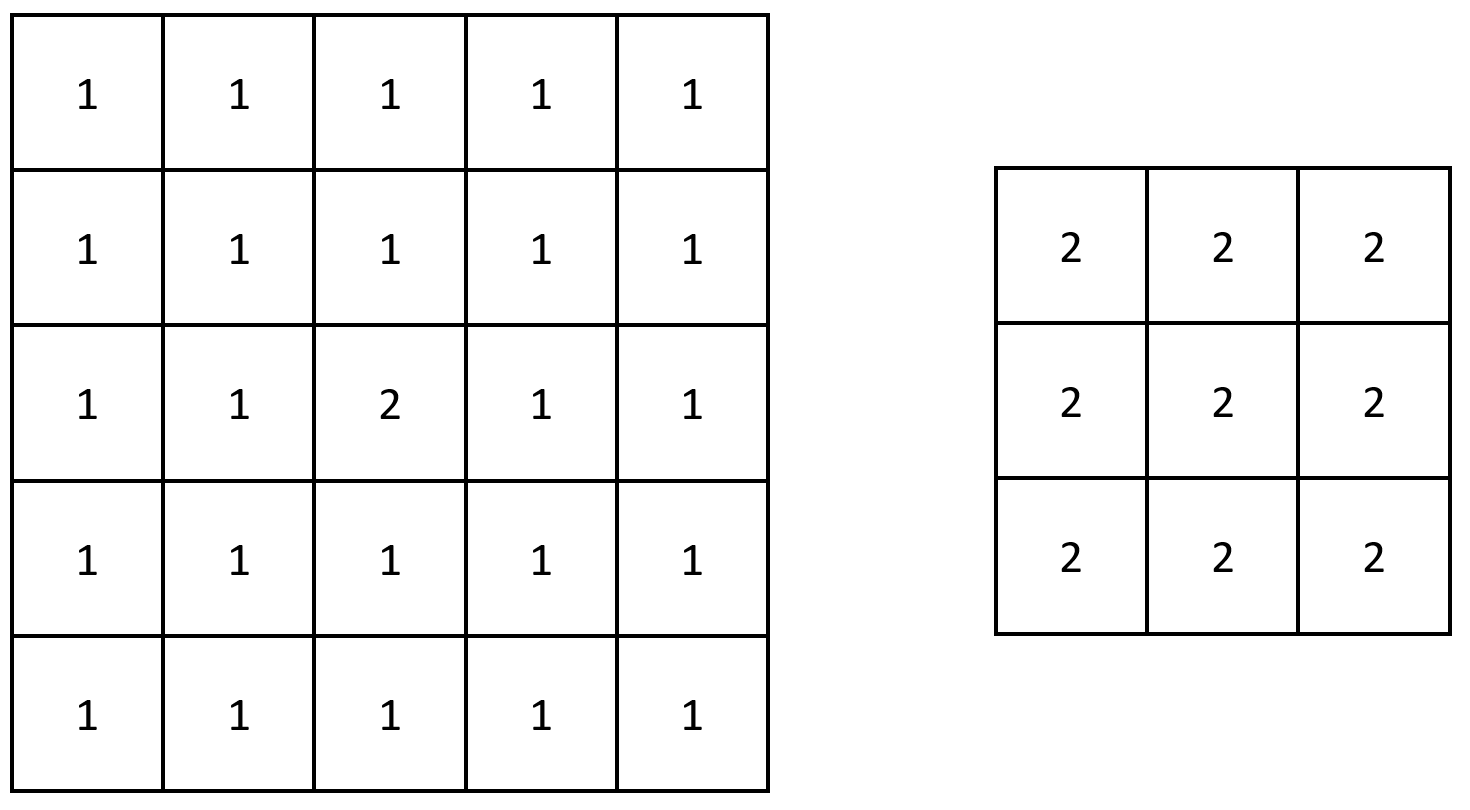You are given an n x n integer matrix grid.
Generate an integer matrix maxLocal of size (n - 2) x (n - 2) such that:
maxLocal[i][j]is equal to the largest value of the3 x 3matrix ingridcentered around rowi + 1and columnj + 1.
In other words, we want to find the largest value in every contiguous 3 x 3 matrix in grid.
Return the generated matrix.
Example 1:
Input: grid = [[9,9,8,1],[5,6,2,6],[8,2,6,4],[6,2,2,2]] Output: [[9,9],[8,6]] Explanation: The diagram above shows the original matrix and the generated matrix. Notice that each value in the generated matrix corresponds to the largest value of a contiguous 3 x 3 matrix in grid.
Example 2:
Input: grid = [[1,1,1,1,1],[1,1,1,1,1],[1,1,2,1,1],[1,1,1,1,1],[1,1,1,1,1]] Output: [[2,2,2],[2,2,2],[2,2,2]] Explanation: Notice that the 2 is contained within every contiguous 3 x 3 matrix in grid.
Constraints:
n == grid.length == grid[i].length3 <= n <= 1001 <= grid[i][j] <= 100
class Solution:
def largestLocal(self, grid: List[List[int]]) -> List[List[int]]:
n = len(grid)
ans = [[0] * (n - 2) for _ in range(n - 2)]
for i in range(n - 2):
for j in range(n - 2):
ans[i][j] = max(grid[x][y] for x in range(i, i + 3)
for y in range(j, j + 3))
return ansclass Solution {
public int[][] largestLocal(int[][] grid) {
int n = grid.length;
int[][] ans = new int[n - 2][n - 2];
for (int i = 0; i < n - 2; ++i) {
for (int j = 0; j < n - 2; ++j) {
for (int x = i; x <= i + 2; ++x) {
for (int y = j; y <= j + 2; ++y) {
ans[i][j] = Math.max(ans[i][j], grid[x][y]);
}
}
}
}
return ans;
}
}class Solution {
public:
vector<vector<int>> largestLocal(vector<vector<int>>& grid) {
int n = grid.size();
vector<vector<int>> ans(n - 2, vector<int>(n - 2));
for (int i = 0; i < n - 2; ++i) {
for (int j = 0; j < n - 2; ++j) {
for (int x = i; x <= i + 2; ++x) {
for (int y = j; y <= j + 2; ++y) {
ans[i][j] = max(ans[i][j], grid[x][y]);
}
}
}
}
return ans;
}
};func largestLocal(grid [][]int) [][]int {
n := len(grid)
ans := make([][]int, n-2)
for i := range ans {
ans[i] = make([]int, n-2)
for j := 0; j < n-2; j++ {
for x := i; x <= i+2; x++ {
for y := j; y <= j+2; y++ {
ans[i][j] = max(ans[i][j], grid[x][y])
}
}
}
}
return ans
}
func max(a, b int) int {
if a > b {
return a
}
return b
}function largestLocal(grid: number[][]): number[][] {
const n = grid.length;
const res = Array.from({ length: n - 2 }, () => new Array(n - 2).fill(0));
for (let i = 0; i < n - 2; i++) {
for (let j = 0; j < n - 2; j++) {
let max = 0;
for (let k = i; k < i + 3; k++) {
for (let z = j; z < j + 3; z++) {
max = Math.max(max, grid[k][z]);
}
}
res[i][j] = max;
}
}
return res;
}

